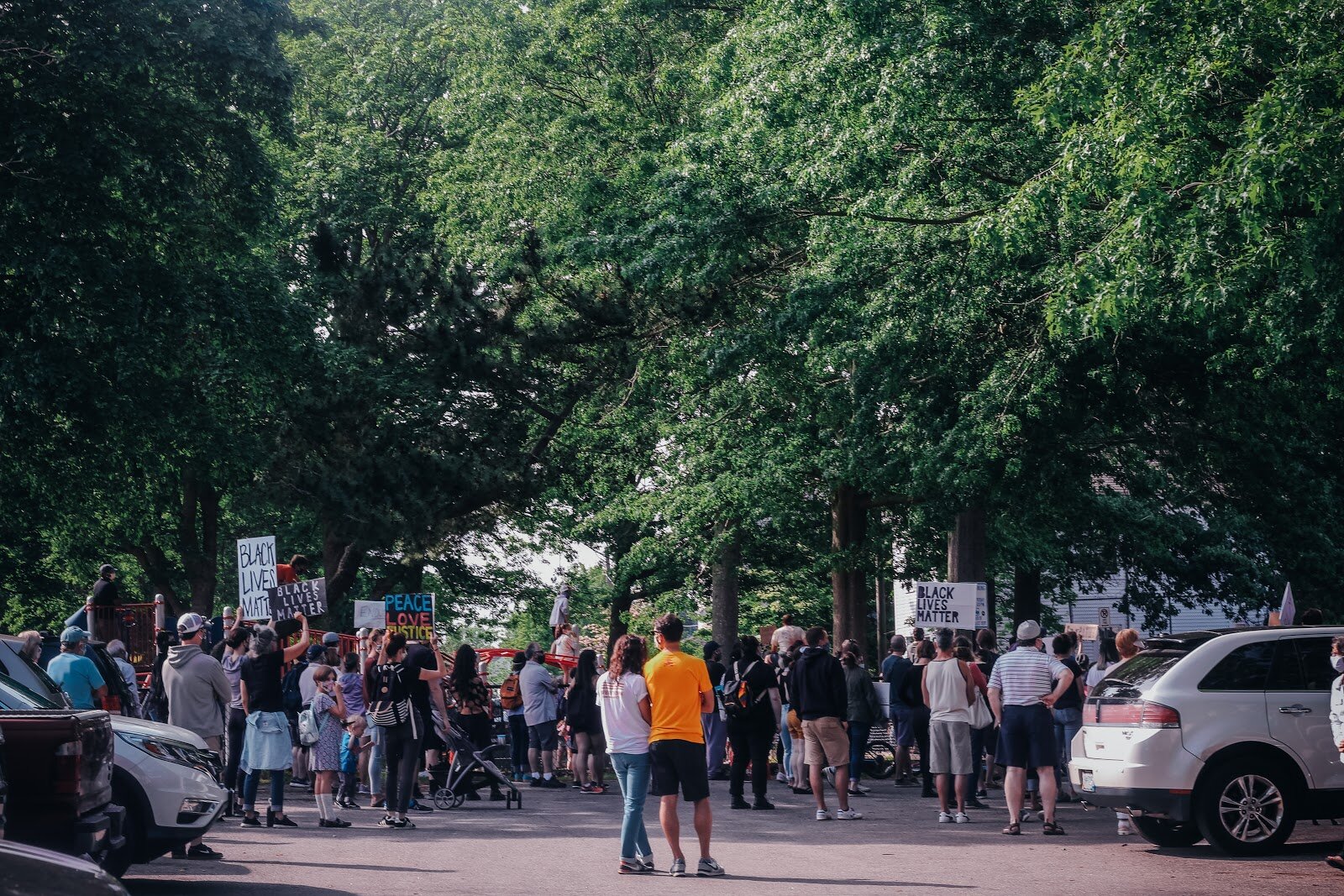Photo by Rosemary Geib ’23
Crowds chanted “Black Lives Matter” and “Peace Love Justice” at a protest in Newport, Rhode Island, on June 6.
By Fiona Hinds ’21
Health & Science Staff Writer
As Black Lives Matter protests continue across the United States, the potential spread of coronavirus has become a point of national attention. According to The New York Times article “George Floyd Protests: A Timeline,” protests against racism and police brutality have been organized in at least 140 cities and in all 50 states across the country.
In an article in The Guardian titled “Is the US heading for a second wave of coronavirus infections?” David Rubin defined a second wave as a “true recurrence of widespread community transmission.” As states begin to ease restrictions and reopen, there will almost undoubtedly be an increased rate of transmission, but this does not necessarily mean that a second wave will occur. Transmission can be reduced during this period if people continue to follow protocols such as wearing face masks and staying at least six feet away from others.
According to a USA Today article entitled “Did protests fuel COVID-19 cases? Are we already in a second wave? Your coronavirus questions, answered,” at least one protester in Tampa, Florida tested positive for the coronavirus. Most people who are currently attending protests are young, which changes the impact of the virus. Young people are less likely to feel ill or require hospitalization if they become infected, making them less likely to be tested and counted in national coronavirus statistics.
However, according to current testing, a spike due to protesting has not yet come. Current climbing case numbers are far more likely due to the reopening measures being taken by nearly every state government, as well as recent anti-lockdown protests and citizen disregard of social distancing guidelines.
Coronavirus transmission can take anywhere from 2-14 days after initial exposure. Over Memorial Day weekend, hundreds reportedly flocked to popular beaches in Florida. Now, the state has seen its highest number of cases for two days in a row, each day reporting over 2,000 diagnoses.
Anecdotal evidence suggests that many protesters across the country have worn face masks during demonstrations, and most take place outdoors — where, if proper physical distancing is observed, the virus is less likely to spread. These protests have taken place outdoors, where it is more difficult for the virus to spread. A second wave is possible — even likely — in the U.S. over the coming months. However, with protests occurring in tandem with states reopening public spaces, including beaches, parks, and restaurants, it will be difficult to clearly attribute the surge in virus cases to a single source.
Editor’s note: This article was originally published in the June 15 edition of Mount Holyoke News but has since been edited for clarity. Sufficient data has not been provided to attribute growing coronavirus cases to current protests.

